Best clipless pedals for triathlon
Looking for a new set of clipless pedals? We test some of the best options on the market for triathlon

Already a tri convert or thinking about foraying into clipped-in comfort? Either way, we’ve clipped on the cleats and tested 14 sets…
Clipless (or, more accurately, clip-in) pedals have greatly evolved since the days of toe clips and straps, and most triathletes will want to take advantage of the greater efficiency offered by clipless pedals.
The foot is securely fixed on the pedal, with various degrees of float (lateral movement) offered by all modern pedal systems to give you freedom to move if necessary, thus protecting the knees.
As the main interface between you and the bike, your pedals should be comfortable underfoot, reliable and easy to get in and out of.
As triathletes, these first two are extra important because you (hopefully) won’t have to unclip mid-race, though make sure you practise with them loads before race day!
The pairs on test here represent a wide range of price points and are all road pedals with cleats that sit proud of the sole.
This means walking in cycling shoes is trickier than with recessed commuter/ mountain bike-style shoes, but you get a larger pedalling platform, which is more efficient and comfortable for riding fast on the road.
Weight differences between pedals tend to be small and many manufacturers use a very similar mechanism on all their pedals, with the only change being the materials used.
That’s with the exception of power meter pedals, which include power reading capabilities within the pedal itself.
Some of the pedals tested below have extra power-reading abilities and some don’t, you’ll see this reflected in a higher weight and heftier price-tag.
Best clipless pedals for triathletes
Shimano PD-R8000 pedals

- £159.99 / $200
220 Triathlon verdict
Shimano has no reason to change the winning Ultegra PD-R8000 formula Score: 90%
Pros
- Reasonably priced
- Well made
- Firm pedalling platform
Cons
- Engagement is straightforward enough, but not the easiest
Shimano’s Ultegra PD-R8000 are the best overall pedals for triathlon.
They’re simple to set-up and are easy to clip in and out of while feeling nice and solid underfoot.
The pedals themselves are hard-wearing but you should be able to source replacement parts, such as cleats, pretty much anywhere.
The mid-range Ultegra PD-R8000 are also very good value. An option is available with a wider Q factor if you require more space between your feet.
Time Xpro 12 SL pedals

- £440 / $440
220 Triathlon verdict
Excellent performance comes at a premium Score: 82%
Pros
- Smooth to clip in and out
- Wonderful to pedal in
- Very light
Cons
- Expensive
The Xpro 12 SL have a spec befitting their position at the top of Time’s road-pedals range.
A carbon pedal body, ceramic bearings and a hollow titanium spindle mean the Xpro 12 SL are exceedingly light, stiff and supportive.
There’s no getting around the price though, which is astronomic for a non-power pedal.
The engagement mechanism is as good as it gets, but cheaper Time pedals also incorporate this technology.
Wahoo Speedplay Nano pedals

- £379.99 / $449.99
220 Triathlon verdict
Pricey and fiddly to install but worthy of their devoted following Score 82%
Pros
- Double-sided entry
- Minimal stack
- Masses of float
Cons
- Premium price
- Laborious set-up
The Speedplay Nano are Wahoo’s most expensive pedals which don’t measure power.
They combine the low stack height, double-sided entry and extra float which have earned Speedplay pedals many fans.
Although they are lighter than cheaper models in the range, the pedal-cleat system weighs a similar amount to the Ultegra PD-R8000.
They’re also more expensive than the Shimano pedals and take more time to set up.
Time XPro 10 Pedals
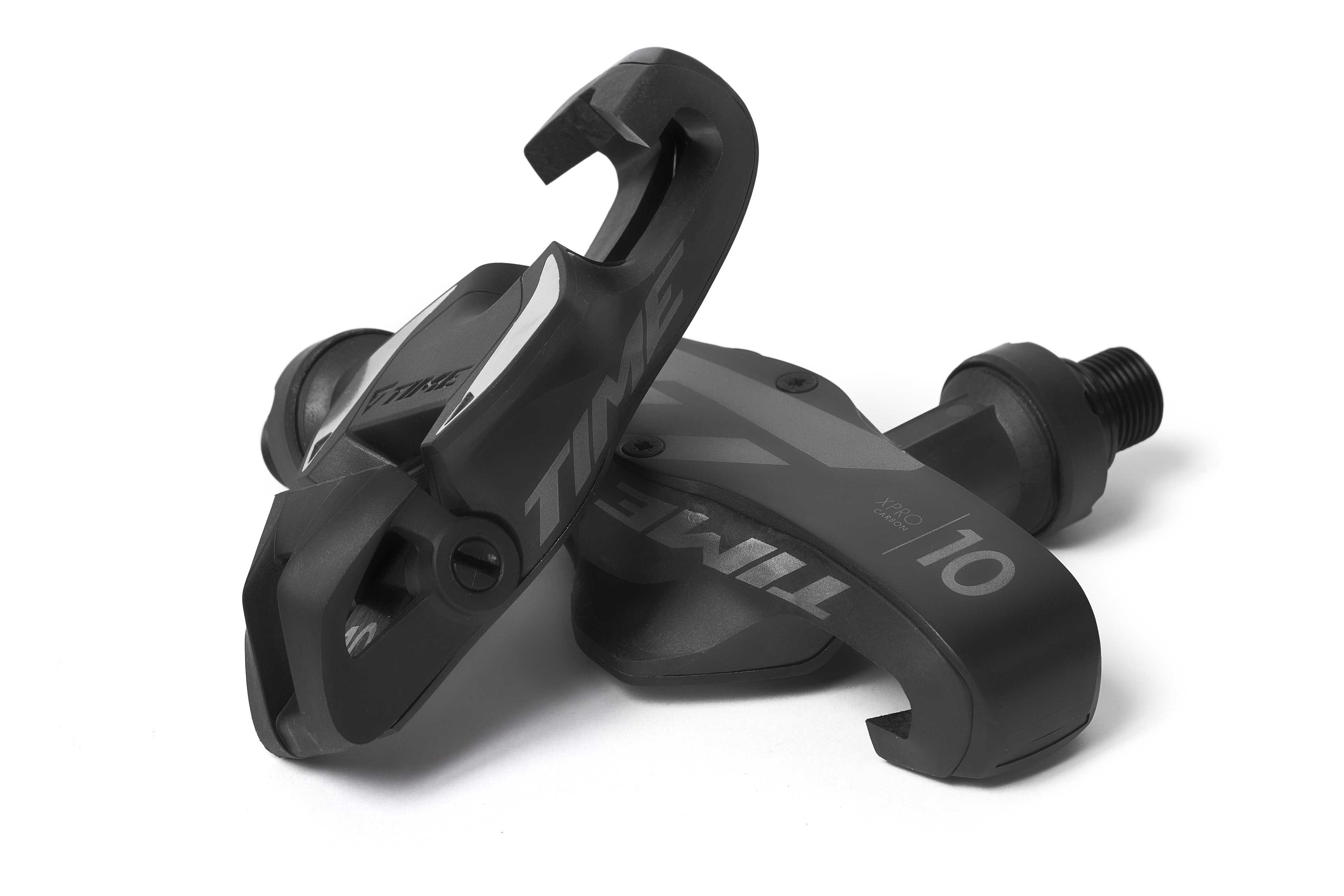
- £150 / $150
220 Triathlon verdict
Expensive, yet light and durable with lovely engagement and plenty of float Score: 85%
Pros
- Straightforward set-up
- Easy engagement
- Loads of float
Cons
- Not cheap
- Some squeeking
Time’s XPro 10 pedals are pricey, yet they are among the most affordable in the XPro range.
For your money you get a carbon fairing on the back, but the axle and bearings are steel as opposed to titanium and ceramic on the higher-end versions.
You still get pedals that weigh just 114g each on our scales, and Time’s redesigned cleat that’s both hard-wearing and easy to set up.
It’s perhaps a less positive ‘snap’ than Shimano or Look Keo systems, but the pedals engage with a light click and for us are the easiest to get into.
There’s plenty of float without affecting the great power transfer at all, and there are three tension adjustment settings.
We experienced some unwanted squeaking with Time’s XPro pedals; this doesn’t affect performance, however, and Time says some Teflon spray should solve it.
Shimano R550 SPD-SL pedals
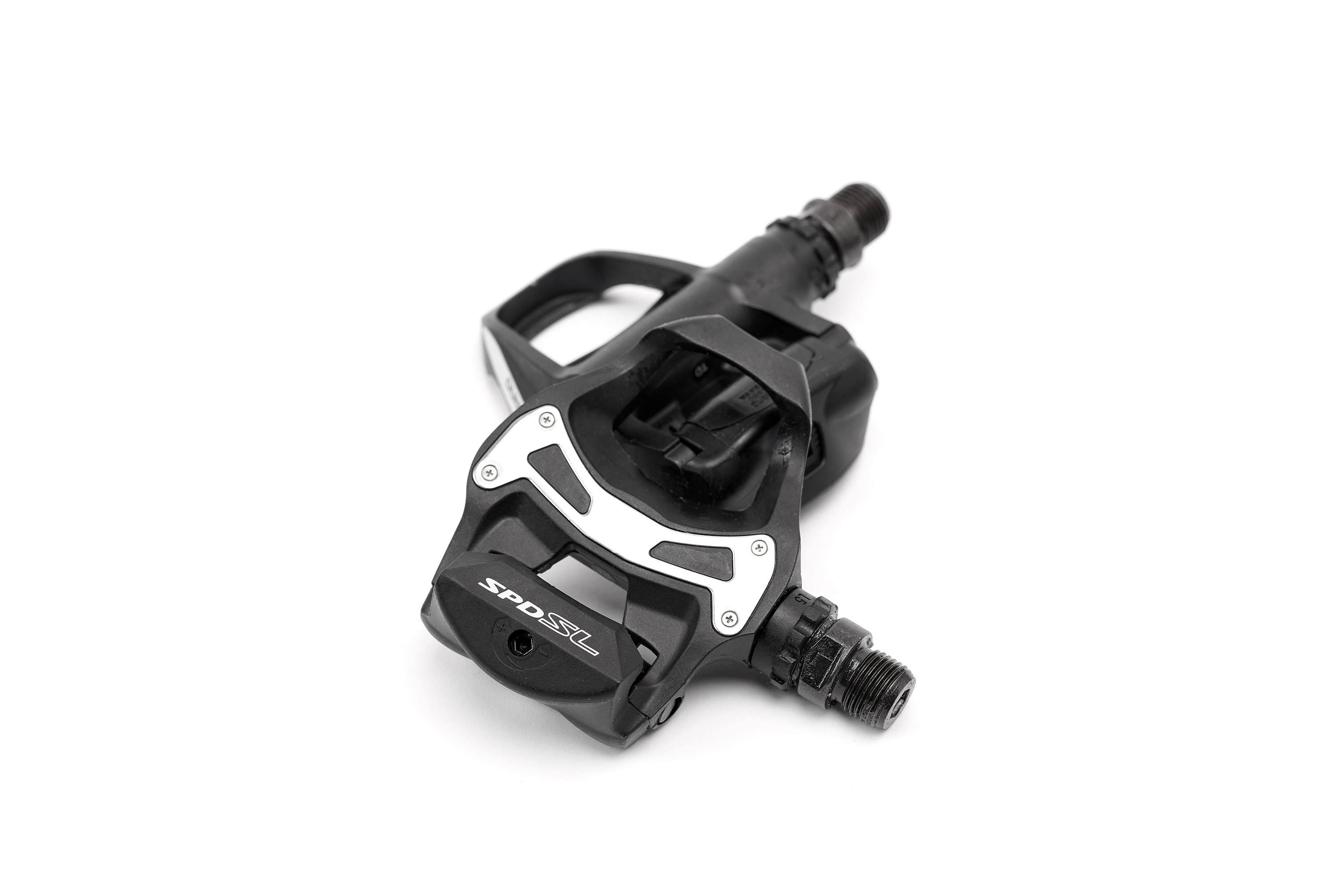
- £69.99 / $100
220 Triathlon verdict
A little weighty, but dependable and well priced pedals Score: 87%
Pros
- Ideal for beginners
- Economic price
- Secure connection, but easy to clip out from
Cons
- Fairly heavy
The single-sided R550 sit towards the bottom of Shimano’s exhaustive pedal range, but there’s a broader appeal here than just the wallet-friendly price.
There’s absolutely nothing wrong with cycling in your running shoes if you feel safer and more confident using flat pedals.
But if you want to clip in for the expected power transfer gains it brings – not to mention the enhanced post-swim drainage and ventilation that bike shoes offer – Shimano and Look will likely be your first pedal ports of call.
From humbling experience, just remember to practise clipping out at speed on the turbo trainer or grass!
Like Look pedals, initial set-up with the three-bolt cleat system is straightforward. A clear guide shows how much release tension you’ve created.
Clipping in comes with an assured snap and instantly feels secure (but not excessively so – clipping out is easy), with the wide 70mm platform and stainless-steel body plate offering impressive foot-to-pedal transfer.
The composite body is heavier than carbon and less durable, and the 156g per pedal weight is unlikely to appeal to weight weenies, but these are reliable picks for a range of triathletes, beginners especially.
Look Keo Classic 3 Plus pedals
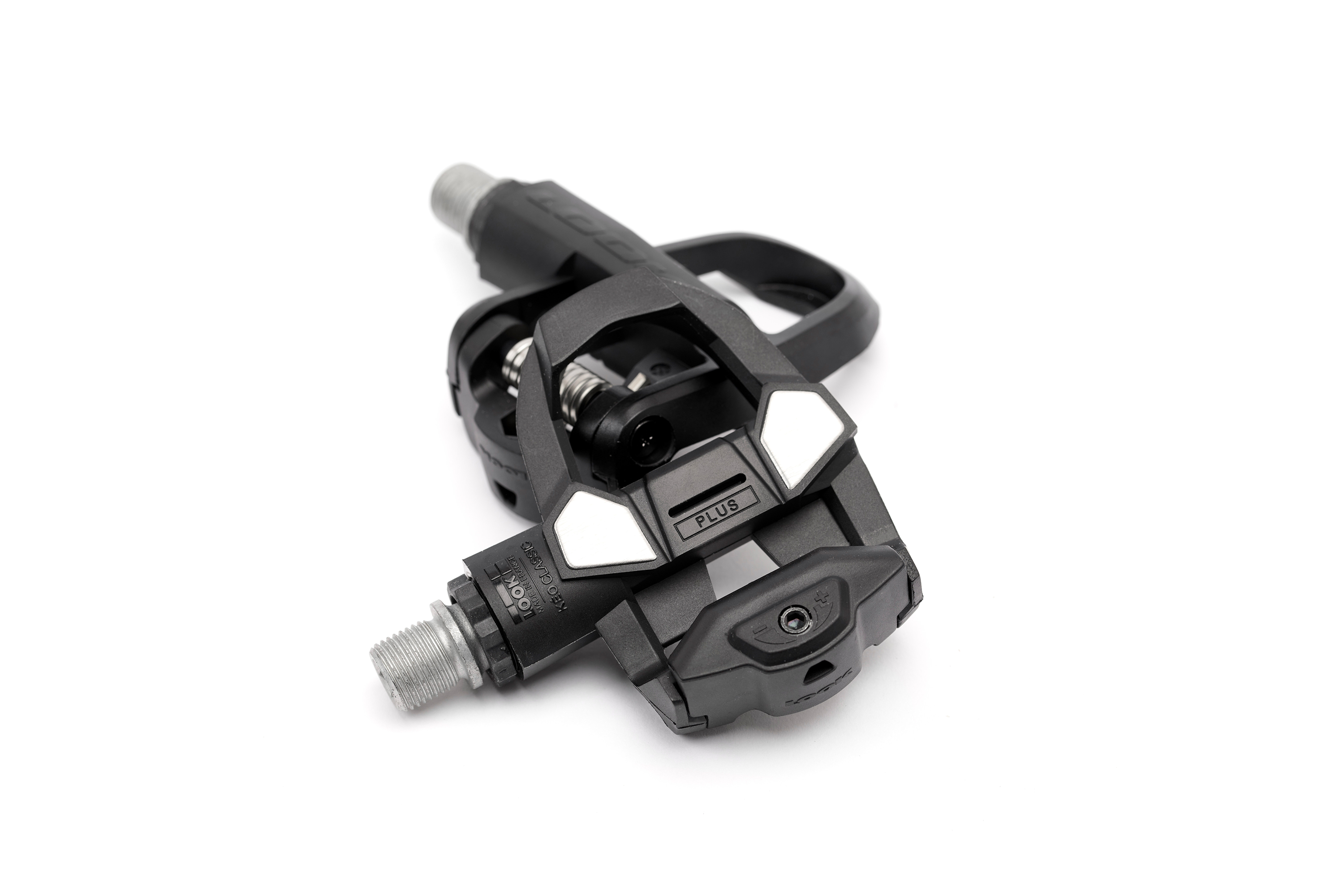
- £59 / $83
220 Triathlon verdict
Easy of engagement makes these a recommended option for newcomers Score 85%
Pros
- Simple entry system
- Reasonably priced
- Cleats included
Cons
- Pedal spring is uncovered
The body of the Look Keo Classic 3 is constructed using composite material, which again keeps the retail price down compared to Look’s top-end models.
The Plus here relates to small stainless-steel plates to aid durability. You can also adjust the tension for an easier/harder release even if the tension guide isn’t as clear as the Shimano’s (clipping out is refreshingly swift).
The pedal body provides a wide 60mm surface area and weight is 140g per pedal, lighter than the wider Shimanos but the R550s do have a cover over the pedal’s spring to prevent grit and water degrading it.
We felt the Keo just edged the R500 in hanging at the same angle on the crank and are a tenner cheaper, but both are hard to fault for clipless beginners.
Worth noting is that you get a supplied pair of cleats with both sets here (cleats can cost £20 so look after them!), but take your time setting them up with the pedals or use a bike fitter as poorly aligned cleats can lead to knee troubles.
Shimano 105 PD-R7000 pedals
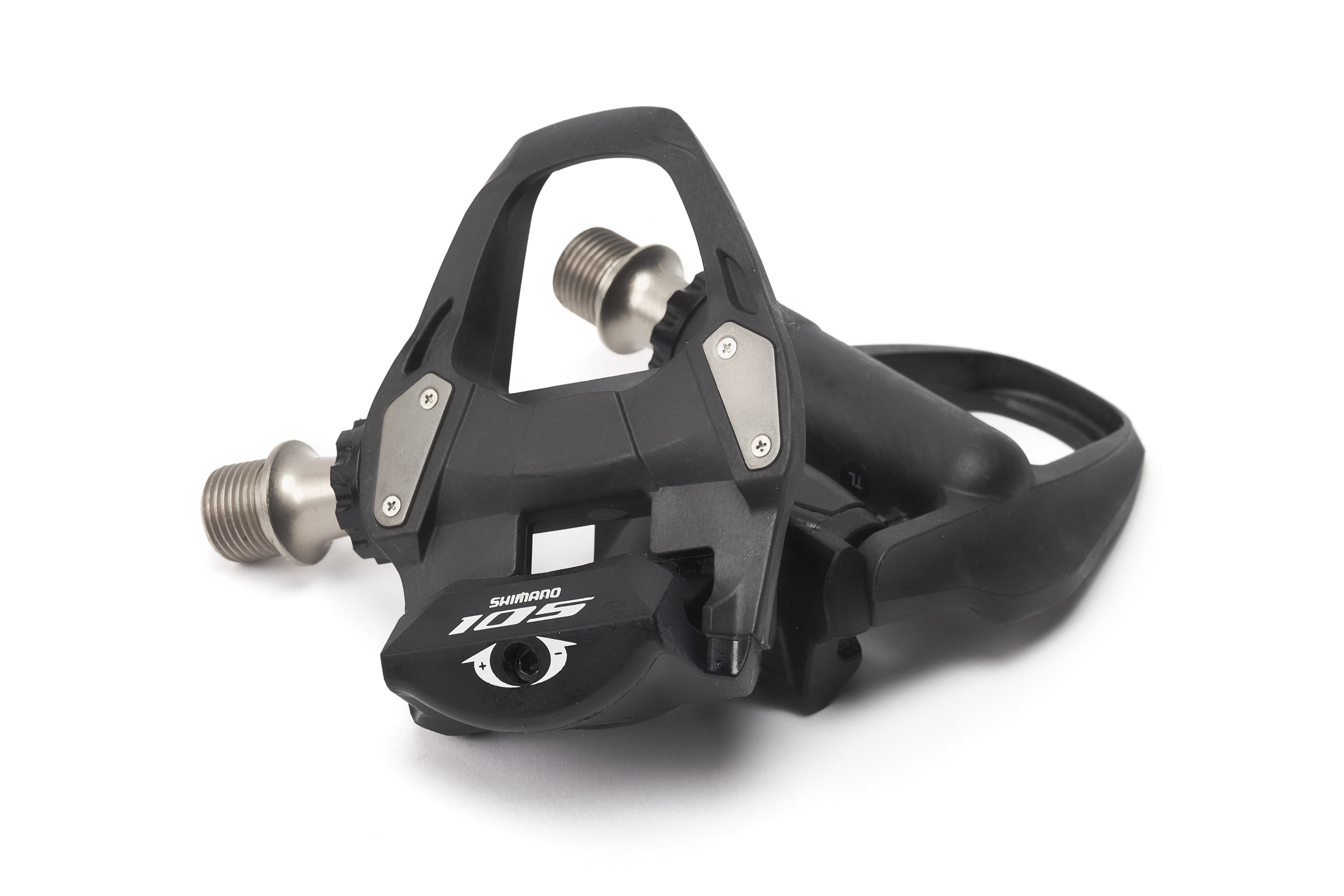
- £124.99 / $150
220 Triathlon verdict
Superb wide-body pedals that will last you years Score: 92%
Pros
- Robust
- High-performing
- Great value
Cons
- None
Shimano’s 105-level pedals have stayed the same despite the rest of its 105 groupset getting an overhaul in 2022.
It’s probably because there’s nothing to improve and we woudn’t upgrade from these, either. Weighing 129g per pedal, you get a very wide carbon composite body with replaceable steel inserts, a perfect platform for clipping into quickly and easily, and stamping out power.
The sealed cartridge bearings can deal with the worst weather conditions, and in our experience will still spin smoothly years later.
Shimano’s yellow three-bolt cleats with the highest float are included, but you can change to blue (medium) or red (no float) if preferred.
Shimano’s PD-RS500 or PD-RS550 pedals are also good options and considerably cheaper, but neither have the composite body and the stack height increases.
Look Keo 2 Max
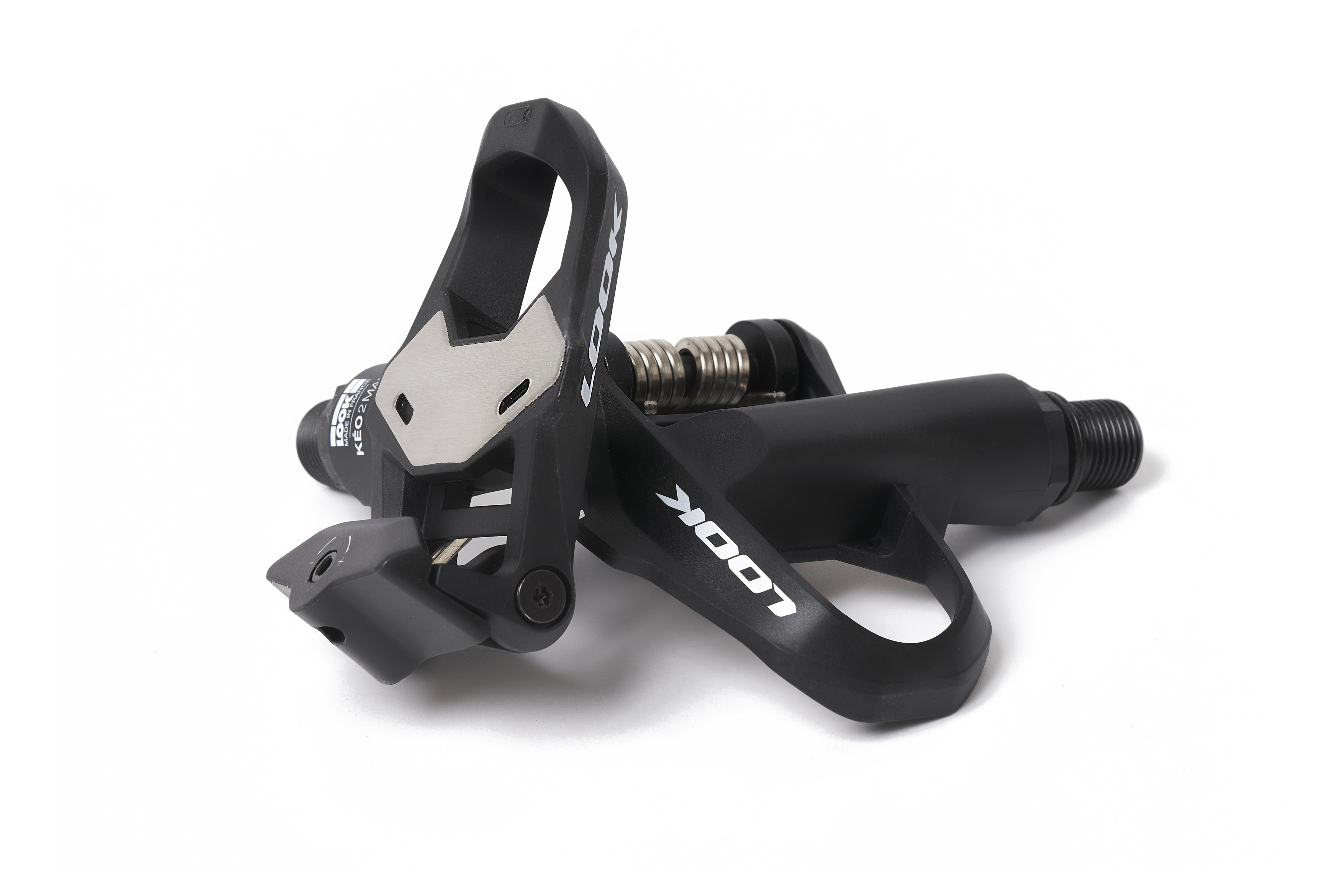
- £80
220 Triathlon verdict
The original and still one of the best road pedals on the market… and at a good price, too Score: 83%
Pros
- All-round performance
- Decent price
- Simple design
Cons
- Pedal body and cleat are quite small
The Keo 2 Max has been in Look’s pedal range for several years now, and for good reason: it’s a classic mid-level road pedal for any cyclist or triathlete who wants something affordable and easy to live with.
For £20 more you can upgrade to the carbon-bodied version, but for most of us the composite body with a 500mm² contact area and 130g weight on the Keo 2 Max will suffice.
The pedalling experience is smooth and comfortable, although we found the smaller pedal body and cleat marginally more difficult to find in stop/start situations like traffic lights compared to the wider Shimano and Time pedal systems.
While our testing concluded that there are other brands making Keo-compatible pedals that are just as good for less, you certainly won’t go wrong sticking with Look.
Giant Road Elite
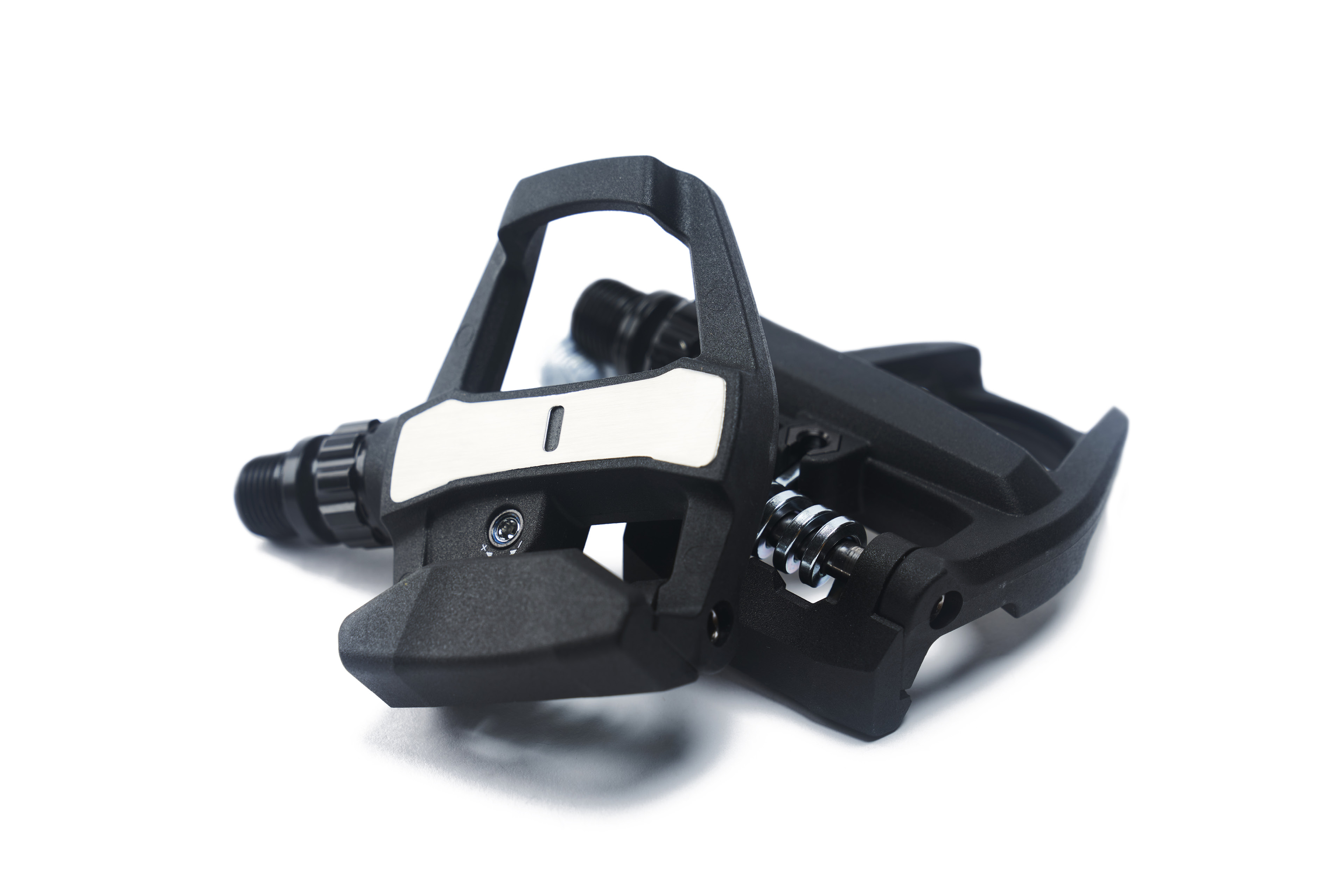
- £64.99
220 Triathlon verdict
Super reliable, affordable and easy to use Score: 90%
Pros
- Very good value
- Lightweight
- Feel efficient
Cons
- None
Giant’s extensive range of accessories and components include two pairs of Look Keo-compatible pedals, with the Road Elite being the higher-end offering.
The upgrade gets you a composite pedal body, bringing the weight down to 136g per pedal, and a chromoly spindle with adjustable release tension, which is accessible just under the cleat plate.
One reason we lean towards Shimano’s pedal system is the super-wide pedalling platform, which feels more efficient and easier to clip into for us. So we were particularly impressed with the nice wide pedal body on Giant’s offering.
The Road Elite pedal feels very comfortable underfoot, adding to the perception that you’re eking out as many watts as possible through the pedals. Included are a set of Keo-compatible cleats.
Van Rysel Road 520 pedals
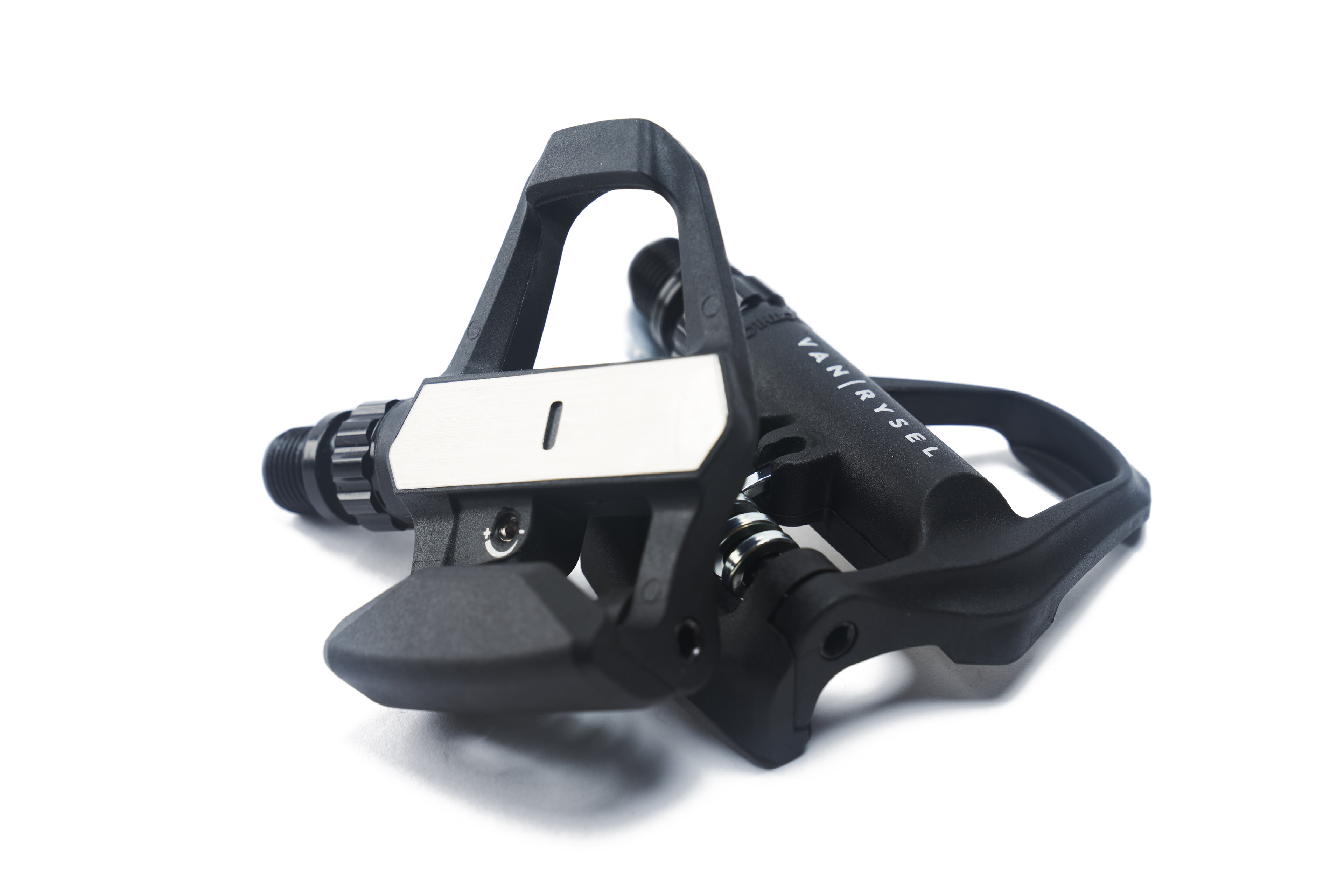
- £29.99
220 Triathlon verdict
Great performance with very slight compromises, but an absolute bargain for under £30 Score: 86%
Pros
- Comparable ride feel to big brands
- Remarkable value
Cons
- Smaller pedal body
- Some cheaper components
Another pedal that’s compatible with Look’s Keo system, Decathlon’s Van Rysel brand offers unbeatable value for money on paper… but can the Road 520 offer similar performance to pricier rivals?
We found the answer was largely yes, with the engagement system, quality of the cleats, and feeling underfoot very similar to Giant and Look’s offerings.
The pedalling platform is smaller which could be marginally less efficient, but we didn’t notice out on the road. Costs have been cut with a polyamide pedal body and steel springs, but you can adjust the tension easily like on any other similar road pedal.
While we’d perhaps prefer the more robust spindle on Look’s Keo 2 Max and the larger platform on Giant’s Road Elite, of the three Keo-compatible pedals on test we can’t give our best buy to anyone but Van Rysel.
Wahoo Speedplay Comp pedals
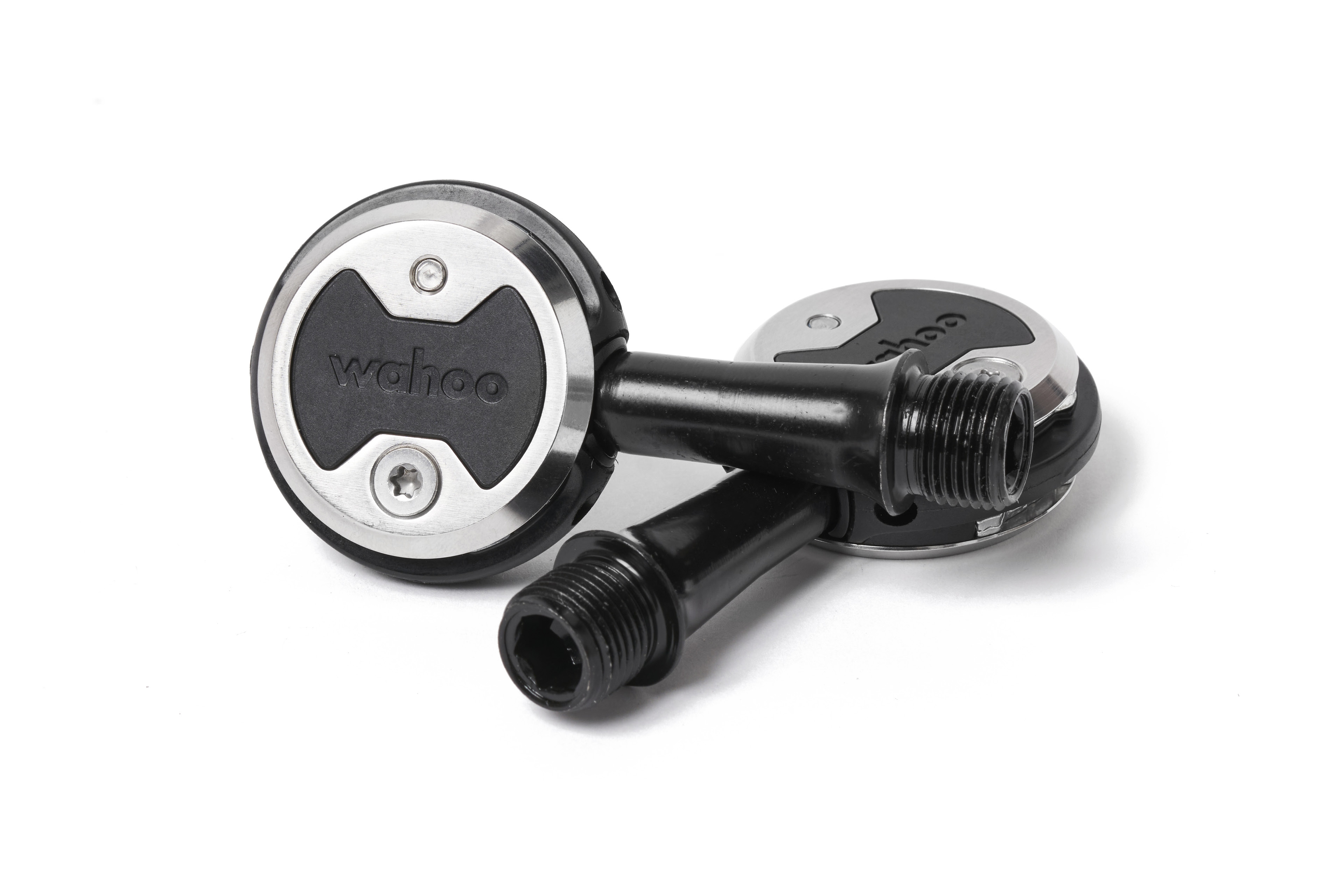
- £134.99 / $149.99
220 Triathlon verdict
Niche but great for those who need max adjustability Score: 79%
Pros
- Well built
- Low stack height
- Loads of float and adjustability
Cons
- Not our top choice for triathlon
- Time-consuming to install
Wahoo pedals such as the Speedplay Comp are quite marmite. Some cyclists find them essential for the range of adjustability, double-sided entry and low stack height, especially crit racers.
For the rest of us, Speedplay advantages can seem slightly outweighed by extra set-up faff, expensive replacement parts, and the unusual engagement system that requires downward force as opposed to sliding the cleat in, which we find quite awkward.
Even so, we can’t fault the robust build and attention to detail, with a hard-wearing chromoly axle and cleat system that allows for float adjustment with a screwdriver.
Once clipped in, the ride experience is smooth and we felt very connected to the bike due to the low stack height. Clipping out’s again slightly tougher than Look or Shimano for us, even with the ‘easy tension’ cleats.
Look Keo 2 Max Carbon
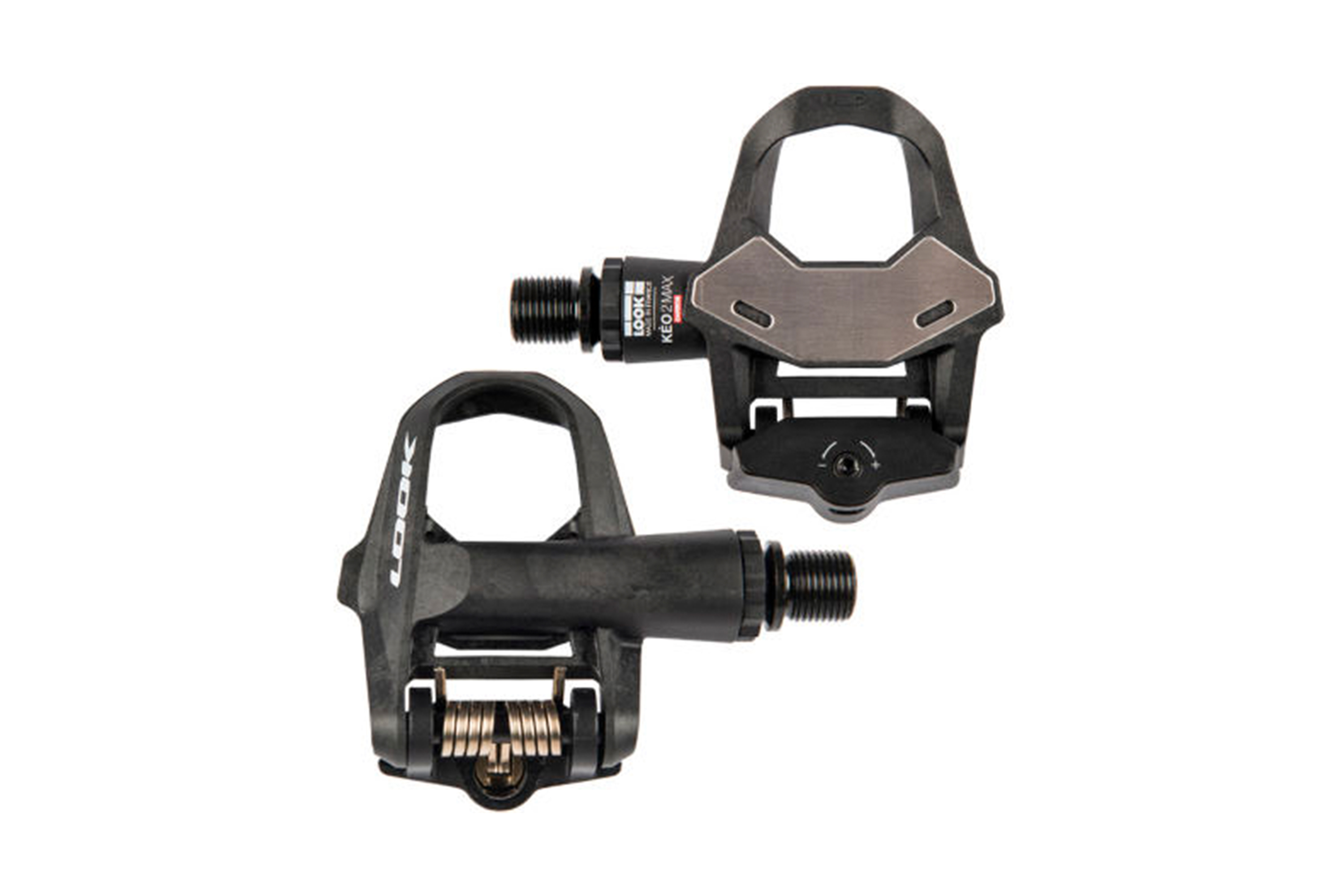
- £99.99 / $137
220 Triathlon verdict
Positive entry and exit but the new look offers little improvement Score: 83%
Pros
- Adjustable
- Stable pedalling platform
- Audible engagement and disengagement
Cons
- Carbon upgrade does little for performance
Look’s Keo 2 pedals have had a facelift. The steel faceplates on these carbon-bodied pedals have been stretched outwards and upwards, giving them their broad appearance.
The new shape is to provide a bigger platform to push against and results in a faceplate 60mm wide, an increase of about 3mm over the previous model.
Any difference it makes is imperceptible through your feet, however, and in a practical sense it’s intangible.
The new Keo 2 Max are a smart pair of pedals, nevertheless – they make an unmistakable snappy click upon entry, use steel springs for simple tension adjustment and weigh 253g.
The worst you can say about them is the carbon body only saves a few grams over the cheaper plastic-bodied pedals and the facelift has deprived them of their distinctive looks.
Wahoo Speedplay Aero Pedals
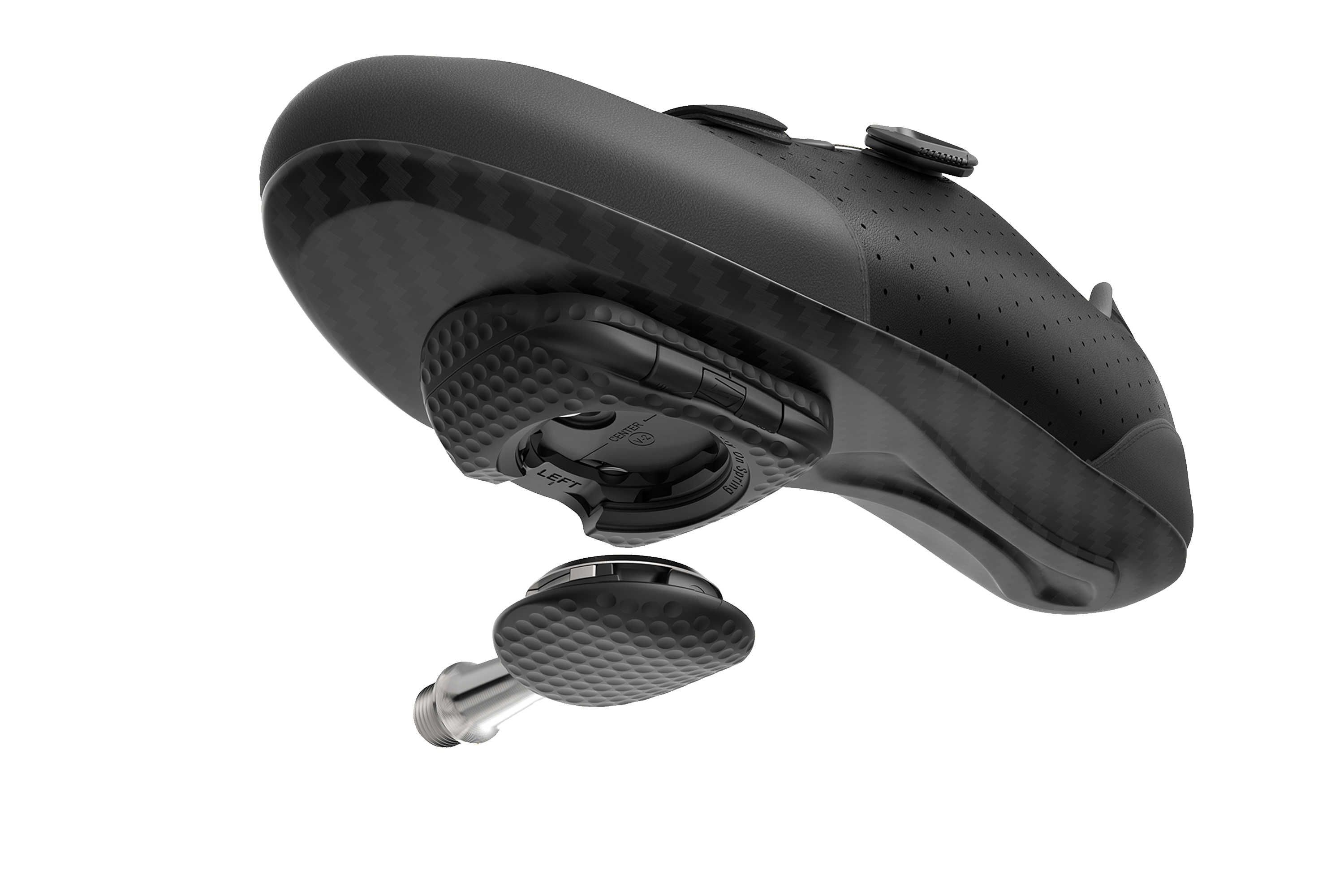
- £239 / $279.99
220 Triathlon verdict
Pricey, but worth it for those who value a more customised fit Score: 79%
Pros
- Brilliant to ride
- Highly customisable
Cons
- Relatively hard to clip into
- Fiddly installation
The Wahoo Speedplay Aero pedals bring improvements over the previous model including triple-sealed bearings, a steel outer and adjustable float.
Set-up takes some work but once on, the ride experience is superb, with the low stack feeling natural and allowing great power transfer.
Though it takes a bit more effort to clip into the pedals compared to Look and Shimano, the rubber surface makes walking about in them less comical.
Best power meter pedals
Garmin Rally RS200 Power Pedals
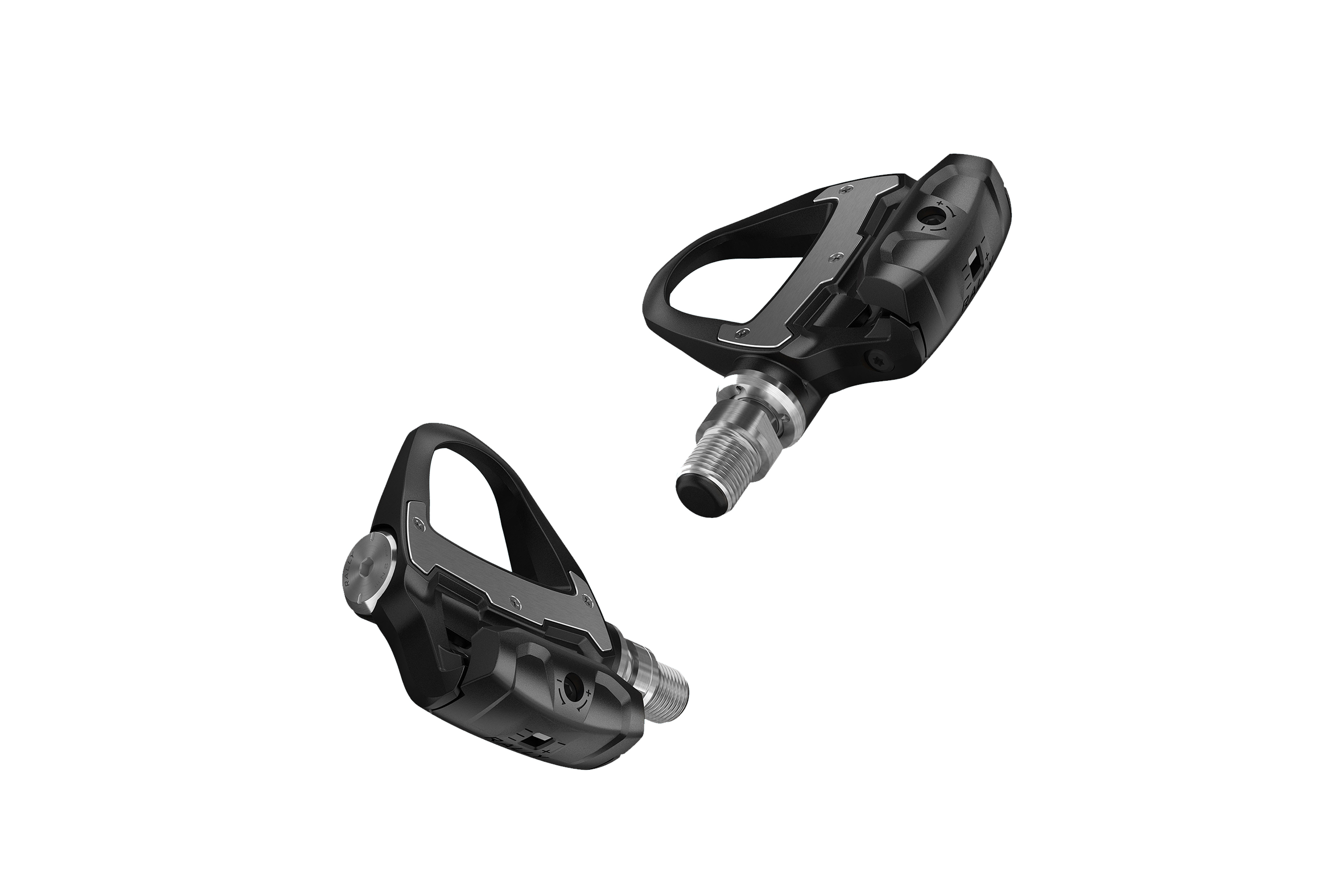
- £969.99 / $1,099.99
220 Triathlon verdict
Prohibitively priced, but otherwise highly accurate and reliable Score: 90%
Pros
- Accurate power measurement
- No excess weight
- Can be tranformed into SPD-style pedals
Cons
- Extremely expensive
The Garmin Rally RS800 Power Pedals have the capacity to be used for both road and MTB pedalling.
The Rallys feel solid underfoot and are comparable in weight to normal pedals, despite their power-measuring credentials.






